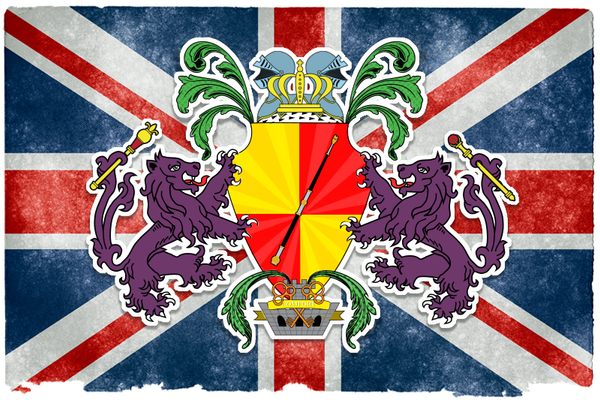The Queen Uses a Special Silver Needle to Select High Sheriffs
This tradition includes a “pricking ceremony.”

In honor of the royal wedding of Prince Harry and Meghan Markle, this week we’re telling the stories of some of the United Kingdom’s oldest and oddest traditions. Previously: Why the queen owns all the swans in England.
In England and in Wales, a high sheriff is supposed to represent the interests of the king or queen in their local district. This job, England’s longest-running secular office, has existed for more than a millennium, going back to the 10th century, and for the past five hundred years or so, high sheriffs have been chosen using an unusual tool—a silver bodkin, a large, blunt needle used for hemming or, historically, as a hair pin.
High sheriffs were once powerful government officials, who could act as judges and marshall military forces. During the era of Norman kings, they were the primary representatives of the monarchy across the kingdom. The word “sheriff” comes from the words shire—a district—and reeve—peace: A shire reeve was meant to keep the peace. But their powers have been waning for well on 700 years, ever since the 13th or 14th century. Today, being a high sheriff is a purely ceremonial role.
But the Queen still has to select people to fill these offices. There are more than 60 high sheriffs in all, and they must be nominated three years in advance of taking office. Each of those three years, the nominee’s name is read out in a nomination hearing. Finally, the queen selects a new sheriff.
This is where the needle comes in. In order to designate a new High Sheriff, the Queen takes the bodkin and pricks a parchment where the sheriff’s name is listed.
Why “hand prick” a sheriff instead of just picking a sheriff? One version of the origin story attributes the pricking practice to Queen Elizabeth I, who ruled from 1558 to 1603. According to this story, Queen Elizabeth was sewing when approached about the task of nominating sheriffs, and she used her needle to mark the document rather than hunt down a writing implement.
But, according to the High Sheriffs, that version of the story can’t be true, since there’s a pricked vellum of sheriff nominees that predates Elizabeth. That document dated to the reign of Henry VII, between 1485 and 1509.
In the sheriffs’ version of the story, the nominating document was pricked with a needle to keep it from being tampered with. Being a sheriff wasn’t a popular job, since it involved enforcing laws and collecting taxes. If the sheriff failed to collect the money he was supposed to, he was personally responsible for paying it. Naturally, a nominated sheriff might try to wiggle out of the demanding role by changing a mark written the page. A hole, though, was harder to fix.
Today, being a high sheriff is a purely ceremonial position: Duties include taking care of visiting High Court judges and supporting royal visits to their county. It’s supposed to be an honor and a way to contribute to one’s community, but it still comes with some perhaps unwelcome burdens—it’s an unpaid position.














Follow us on Twitter to get the latest on the world's hidden wonders.
Like us on Facebook to get the latest on the world's hidden wonders.
Follow us on Twitter Like us on Facebook